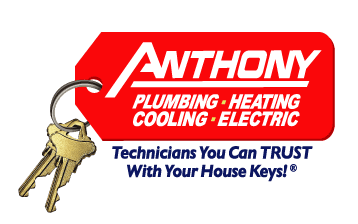Also learn how to Prevent Frozen Pipes and What to Do if it’s Too Late

During extended bouts of frigid weather, our furnaces run non-stop. Is this normal? And if it gets below zero outside, will my furnace be able to maintain a 70 degree temperature inside? And what can I do to keep my family warm and prevent my pipes from freezing?
The following is information about heating systems and tips to keep you warm as you hunker down in artic weather.
- Properly selected and installed furnaces in Kansas City can maintain at least 70 degrees inside even when it is 0 degrees outside; a 70-degree temperature difference. Most furnaces (whether electric or gas) are oversized, meaning they could maintain an above 70 degree temperature difference.
- When the outside temperature is in single digits your heating system will run close to 60 minutes per hour – it will not shut off or shut off for a short time period and then come back on for long cycles. This is normal, and it is okay.
- Even when temperatures plunge below zero outside, the structure of a home has “thermal mass,” which resists temperature change, so in below-zero weather the heating system will often still be able to keep the desired temperature inside.
- If desired, a homeowner can “over heat” their home by bumping up the inside temperature before the sub zero cold period and this will help keep a home warm.
- A homeowner could use a supplemental electric heater (but not near the main system thermostat) to add additional heat in the colder areas of their home.
- It is not recommended to have a fire in the fireplace for supplemental heat. A fireplace will draw a lot of heated air out of the house when it operates. There may be some benefit of radiant heat from the fire if you were near it, but it should only be used as temporary heat if the furnace does not operate. Fireplace flue dampers should be shut (when not having a fire) as a tremendous amount of cold air will come in thru the fireplace.
- It is not recommended that an oven or stove is used for supplemental heat.
- People with electric homes will have heat pumps and they will run as normal. The homeowner does not need to switch to emergency heat at the thermostat for the backup heat to come on. Operating the heat pump is more efficient than the electric furnace.
- People with heat pumps and a gas furnace for a back up should switch to emergency heat (a better term is auxiliary heat but the thermostat will say emergency heat). It is cheaper to heat a home with gas than electricity if gas is available. Switching to emergency heat will lock out the heat pump. This would be normal winter operations regardless of how cold it is outside.
- People that have water piping in suspect areas – attics, crawl spaces, garages and rim joist areas above basement foundation walls should take precaution to insulate the pipes or put electric heat tape on them. Vanity doors and kitchen sink cabinet doors can be left open to allow room air to circulate near the water piping. Portable electric heaters can be used near areas where water piping has frozen in the past. Faucets can be left on (both hot and cold) with slow drips which will help prevent pipes from freezing. Our Auto Ray infrared garage heaters are an excellent way to keep pipes from freezing anywhere near a garage.
If you have concerns about your furnace, call our expert technicians right away. We get very busy during extended periods of frigid temperatures, so don’t wait. Call us at A-N-T-H-O-N-Y 268-4669 (913) or (816) or click here: https://anthonyphc.com/schedule-service/.

